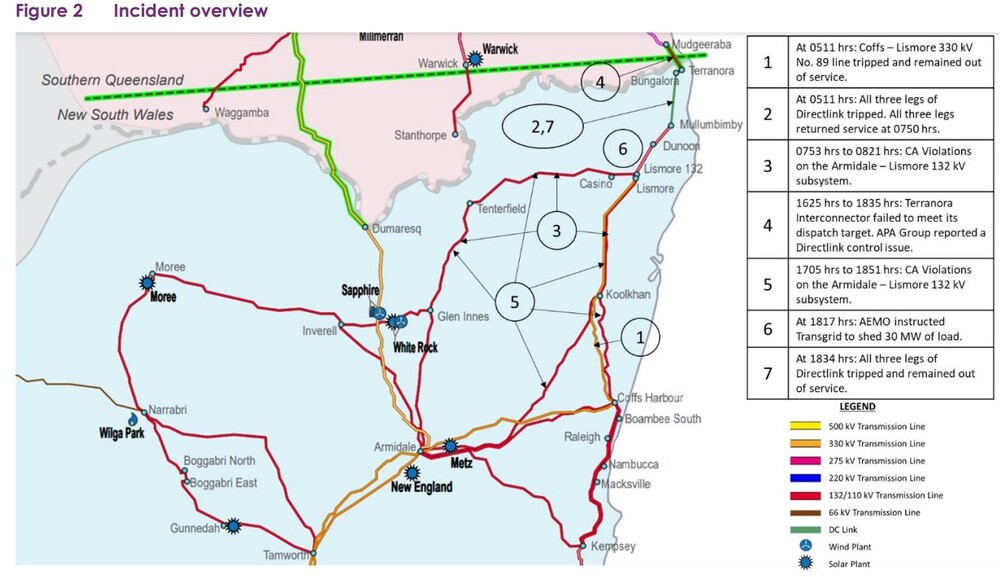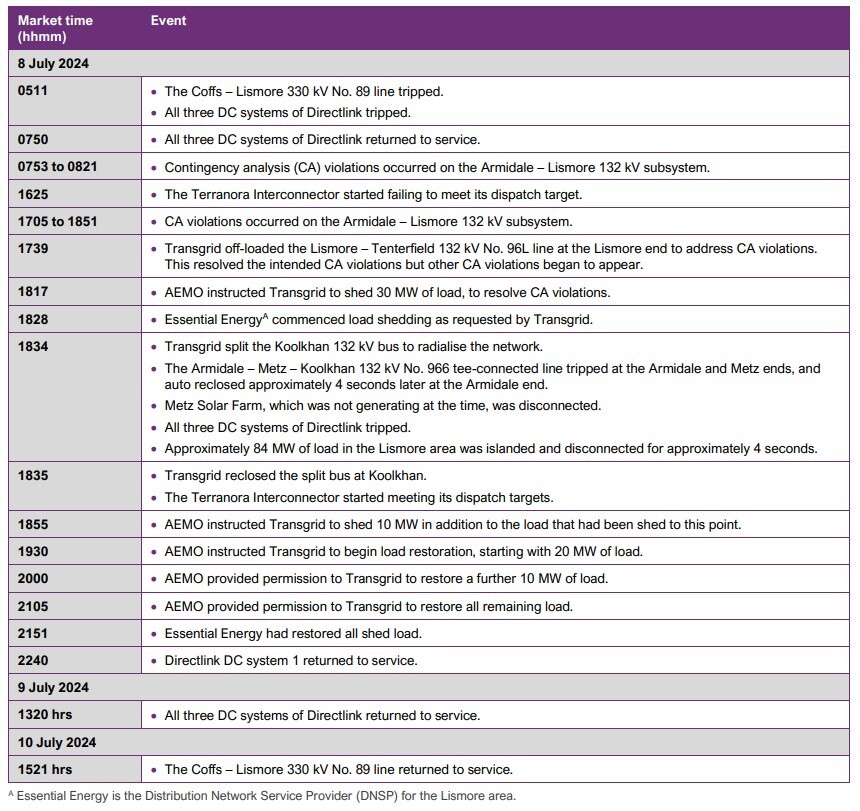Lismore was the epicentre of a power security event which caused last week's power outage
Lara Leahy
17 July 2024, 9:02 PM

Lismore was the epicentre of a series of transmission tower line faults last week when power was shut down to the greater Lismore region. This left 24,500 homes without electricity across the Northern Rivers.
A report released by Australia’s Energy Market Operator (AEMO) this week lists all the facts leading up to last week's power outage, but a spokesperson for the AEMO said knowing the reason could be months away.
In essence, the power outage was deliberately enacted to prevent potential catastrophic infrastructure damage, but the report reads as though Lismore is the focal point of transmission line failures in all possible directions.

In the early hours of Monday morning, our main source of power from the south via Coffs Harbour was cut off due to a fault. Another fault tripped the interconnector bringing electricity down from Queensland, but the fault returned to service.
Not long after, Contingency Analysis violations occurred to the southwest on the Armidale line connecting power to Grafton on its way to Lismore. A Contingency Analysis Violation indicates that an asset did not behave as it should.
Power seemed to settle until the afternoon when the evening's need for power was building to a peak.
At this point, there was no power coming from the south (Coffs Harbour transmission line was off) and just before 4.30pm, the interconnector with Queensland was not keeping up with its dispatch target - so power from the north of Lismore was unreliable.
Then, around 5pm the Armidale connection to the southwest, followed by the Tenterfield connection at about 5.30pm to the west, also began to misbehave.
In an effort to control the situation, the Tenterfield line was switched off. It fixed some issues, but others sprung up.
The concern to keep a sufficient supply of electricity to the area was compounding to a volatile point.
A spokesperson for AEMO said, “Not only was that major transmission line down, other lines feeding around the network or feeding energy into Lismore went down as well. So, that exacerbated the ability to service the demand. This made the flow of power more unstable and unreliable.”
This put the actual infrastructure at risk of damage if demand outstripped the ability to supply. AEMO instructed that electricity needed to be "shed' or turned off.
By 6.30pm, Essential Energy were using their network to restrict the supply of power.

After the power feed to Lismore was halted, a series of works and resets were attempted to try and reboot the system so it could run in its typically stable manner.
However, more power had to be switched off, resulting in more fluctuations in the power supply to the wider area.
By 7.30pm, the AEMO were confident that they were able to begin reconnecting the power. Most of this was done by 8pm. However, it took until 10pm to have the entire area back in power. This was mainly coming from the west and southwest.
One of the three systems from QLD (interconnector) was back online later that night, and the other two were fully restored the next day.
It took another day for the power to be restored from the south.
“Once that main power line was down for the day, the interconnector wasn't behaving as it should. The other power lines in that area were sensing something wasn't right. So they've tripped off, and that further exacerbated and limited supply to the Lismore area.
“When we see this happen, we realise it is not right. This could escalate into a failure of the whole network in that area, which could lead to prolonged electricity outages and widespread infrastructure damage. So we take the proactive and the last resort action to shed or turn off electricity use, until the system stabilises.”
This confluence of events was an unusual occurrence. The way electricity infrastructure is set up is intended to be responsive.
“Powerlines do trip off. But because there's a range of transmission lines feeding into lower voltage or high voltage infrastructure, there are contingencies to cope with changes and that's the way it was designed.
“The interconnector between states provides the cheapest way to get electrons to consumers. And it's also a resilient design. So if something happens in one state, they can be supported from electricity in other states.”
In this situation, an investigation is vital to understand the limits of the system and make the infrastructure even more resilient.
“All of these faults added up to a power system security event. The answers as to why aren’t in this report, because we just haven't had the time to investigate as well as other companies investigating.
“The purpose of this preliminary report is to gather the information available and then take it from there.”

For a breakdown of the levels and layers of electrical supply, please refer to last week's story.
If you would like to read through the full report from the AEMO, it is available here.

